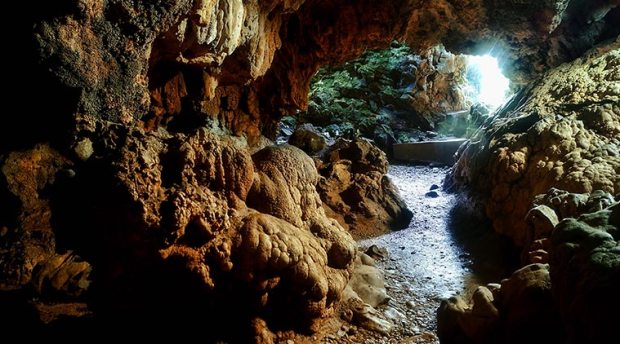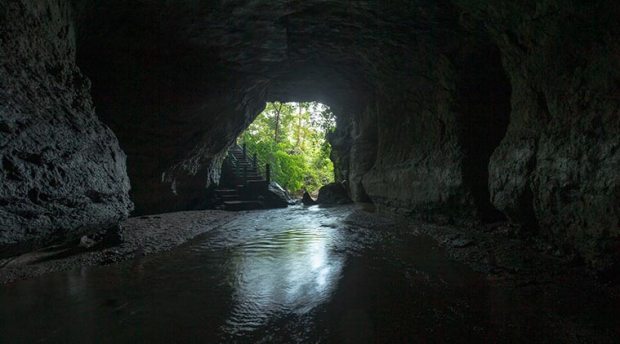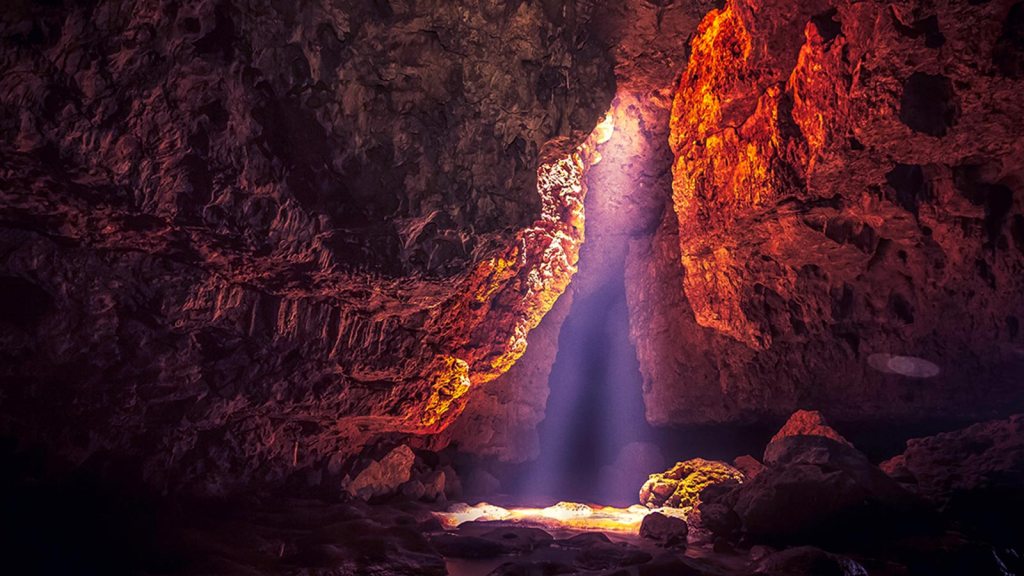For millions of years, Mother Nature has meticulously carved a hidden masterpiece beneath Meghalaya’s cliffs and mountains. These caves, both mapped and uncharted, house rare species, ancient fossils, and some of the world’s longest and deepest subterranean chambers, making Meghalaya the ‘Caving Capital of India’.
While only portions of these complex cave systems have been documented, Meghalaya’s accessible caves give a glimpse into their mystical allure. Arwah Cave and Mawsmai Cave, located near Cherrapunji, are two of the most popular sites, welcoming regular visitors to explore their scenic stalactites, stalagmites, and fossil-laden walls. For those seeking a more daring experience, Krem Dam and Krem Riblai offer an untamed thrill, with deep passages and untouched pathways that only seasoned adventurers have braved.

Mawmluh Cave, located near Cherrapunji, is one of Meghalaya’s most iconic and significant caves, attracting adventurers and scientists alike. Known for its complex, narrow passages and interlinking chambers, Mawmluh Cave stretches over 7 kilometers, making it one of the longest caves in the Indian subcontinent. What makes Mawmluh particularly remarkable is its geological significance: scientists have used it to define a new geological age, the Meghalayan Age, which began around 4,200 years ago after a global climatic event. The cave’s limestone formations reveal ancient climate records, fossil traces, and unique mineral deposits that provide invaluable insights into Earth’s history. Venturing into Mawmluh requires a sense of exploration and readiness for its often water-filled paths, underground streams, and steep climbs, offering a genuine caving experience that remains unparalleled in Meghalaya.
Siju Cave in Garo Hills is another of Meghalaya’s legendary wonders. Known as the Bat Cave for its winged residents, it presents an awe-inspiring entrance that leads to a labyrinth of subterranean rivers and streams. These caves are of immense geological importance, rich in biodiversity and offering significant discoveries for both scientists and adventure enthusiasts alike.

The best time to explore Meghalaya’s caves is during the winter months from November to February when the dry season reveals access to deeper cave entrances. While some caves offer easy access, others require experienced guides and specialized equipment, making caving a thrilling, hands-on encounter with Meghalaya’s ancient natural heritage.
While some parts of these caves are easy to traverse, others remain unexplored, adding an element of mystery to Meghalaya’s subterranean landscape. Underneath Meghalaya’s terrain lie some of the world’s longest caves—Krem Liat Prah and Krem Chympe among them—hidden beneath forests, with passages that go on for miles. Caving here demands more than basic adventure spirit; it requires a commitment to challenge, patience, and the right equipment to venture safely. For this reason, professional spelunking teams make annual trips, diving deeper into Meghalaya’s southern frontier to document new cave systems.
Exploring these caves offers more than a thrill—it’s a unique chance to witness ancient, otherworldly environments and ponder the forces that have shaped our planet over eons. It’s also an opportunity to become a part of ongoing explorations, as scientists and spelunkers continue to map, study, and marvel at the state’s unmatched natural wonder. For travelers with a love of adventure and an appreciation for the unknown, caving in Meghalaya is nothing short of a transformative experience.
Disclaimer:
This article contains sponsored content that may not reflect the independent opinion or views of FinancialExpress.com. Further, FinancialExpress.com cannot be held responsible for the accuracy of any information presented here. Please consult a certified financial advisor before making any decisions based on this article.

